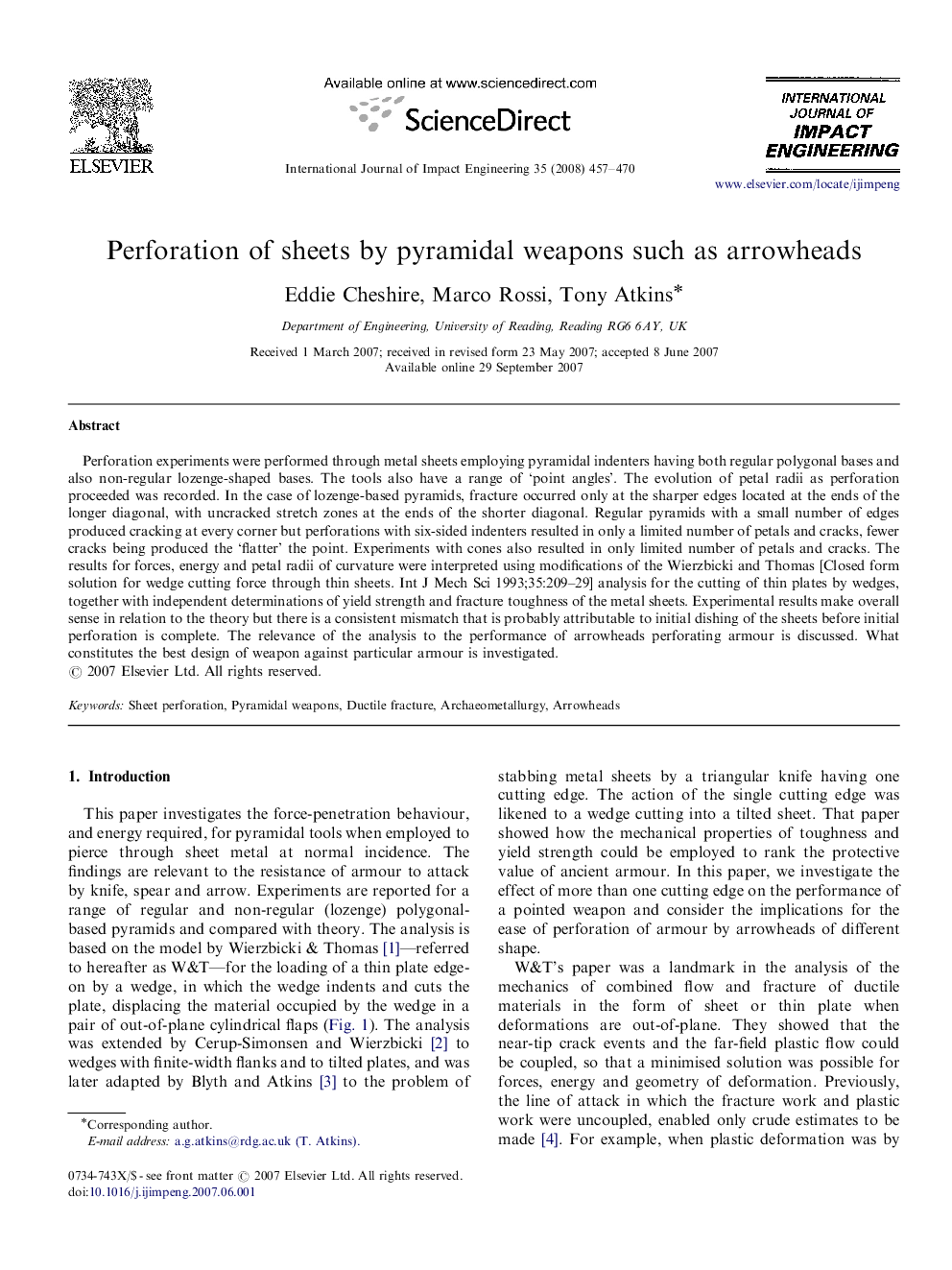| کد مقاله | کد نشریه | سال انتشار | مقاله انگلیسی | نسخه تمام متن |
|---|---|---|---|---|
| 779783 | 1464151 | 2008 | 14 صفحه PDF | دانلود رایگان |

Perforation experiments were performed through metal sheets employing pyramidal indenters having both regular polygonal bases and also non-regular lozenge-shaped bases. The tools also have a range of ‘point angles’. The evolution of petal radii as perforation proceeded was recorded. In the case of lozenge-based pyramids, fracture occurred only at the sharper edges located at the ends of the longer diagonal, with uncracked stretch zones at the ends of the shorter diagonal. Regular pyramids with a small number of edges produced cracking at every corner but perforations with six-sided indenters resulted in only a limited number of petals and cracks, fewer cracks being produced the ‘flatter’ the point. Experiments with cones also resulted in only limited number of petals and cracks. The results for forces, energy and petal radii of curvature were interpreted using modifications of the Wierzbicki and Thomas [Closed form solution for wedge cutting force through thin sheets. Int J Mech Sci 1993;35:209–29] analysis for the cutting of thin plates by wedges, together with independent determinations of yield strength and fracture toughness of the metal sheets. Experimental results make overall sense in relation to the theory but there is a consistent mismatch that is probably attributable to initial dishing of the sheets before initial perforation is complete. The relevance of the analysis to the performance of arrowheads perforating armour is discussed. What constitutes the best design of weapon against particular armour is investigated.
Journal: International Journal of Impact Engineering - Volume 35, Issue 6, June 2008, Pages 457–470